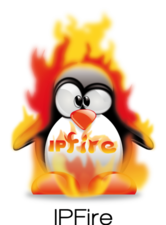CeBIT Open Source Project Lounge -- IPFire
IPFire -- firewall distribution
ByIPFire is among the 15 projects that will present their work at CeBIT, offering an open source firewall distribution.
In a nutshell - describe your project in a few words:
IPFire set a goal for itself to develop a firewall distribution with a very high security level that is also easy to install and intuitive to use. We also put a high value on multiple deployment opportunities: IPFire scales from home users to mid-sized companies and can be adapted to individual needs through numerous extensions.
When did the project begin?
The project began in 2004 from a need to develop a network system that covers a wider task area than a conventional router.
How many active members does the project have?
The team consists of five international core developers and a handful of very active community developers. But users themselves contribute a lot of small improvements that ultimately make a big difference in IPFire quality.
How did the project come about?
At first it was an extension for an existing Linux firewall distribution. It turned out very quickly, however, that IPFire needed to go another path to make a more adequate use of its functionality. That encouraged many to continue further development on the project. Because we were quickly reaching the cutting edge, in November, 2007, after two years of development, we released a complete, fundamental redesign with IPFire 2.0. With good experience and the high stability that the system provides, IPFire soon found an entry in mid-sized to large enterprises and the user count has been growing steadily.
What would make a CeBIT visitor interested in your booth?
Because we offer each visitor an individually tailored security solution with easy usability. We can answer all questions as to applicability and will give practical tips for installation. We will gladly hand out CDs for use in the enterprise or at home.
Who do you make your software for?
The target groups for IPFire are individual users and companies, but also interested parties from the educational and scientific areas.
Where do you see your biggest current challenge?
The greatest challenge for the IPFire team is to find enough free time for the various project tasks. Because of the time constraints, many ideas are put on hold, as other concerns with a higher priority keep coming up. Other things fall away from a lack of financial resources, because our project is fully supported from within our ranks.
If you were to hire a full-time project developer now, what problem should he or she be ready to solve?
Development of our new version 3.
Under which license is the software currently offered?
GNU General Public License v3.
Internet adress: http://www.ipfire.org.
Subscribe to our Linux Newsletters
Find Linux and Open Source Jobs
Subscribe to our ADMIN Newsletters
Support Our Work
Linux Magazine content is made possible with support from readers like you. Please consider contributing when you’ve found an article to be beneficial.

News
-
Parrot OS Switches to KDE Plasma Desktop
Yet another distro is making the move to the KDE Plasma desktop.
-
TUXEDO Announces Gemini 17
TUXEDO Computers has released the fourth generation of its Gemini laptop with plenty of updates.
-
Two New Distros Adopt Enlightenment
MX Moksha and AV Linux 25 join ranks with Bodhi Linux and embrace the Enlightenment desktop.
-
Solus Linux 4.8 Removes Python 2
Solus Linux 4.8 has been released with the latest Linux kernel, updated desktops, and a key removal.
-
Zorin OS 18 Hits over a Million Downloads
If you doubt Linux isn't gaining popularity, you only have to look at Zorin OS's download numbers.
-
TUXEDO Computers Scraps Snapdragon X1E-Based Laptop
Due to issues with a Snapdragon CPU, TUXEDO Computers has cancelled its plans to release a laptop based on this elite hardware.
-
Debian Unleashes Debian Libre Live
Debian Libre Live keeps your machine free of proprietary software.
-
Valve Announces Pending Release of Steam Machine
Shout it to the heavens: Steam Machine, powered by Linux, is set to arrive in 2026.
-
Happy Birthday, ADMIN Magazine!
ADMIN is celebrating its 15th anniversary with issue #90.
-
Another Linux Malware Discovered
Russian hackers use Hyper-V to hide malware within Linux virtual machines.

